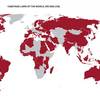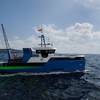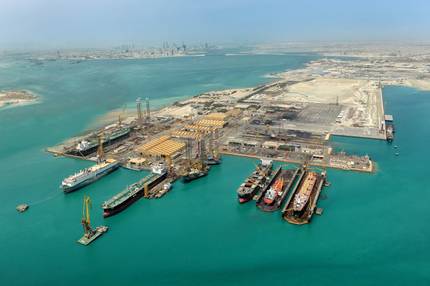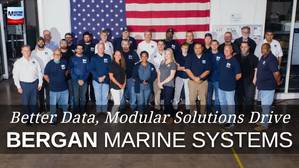Dubbed "The Greatest Engineering Wonder of the World," the Panama Canal has experienced a whirlwind run since President Woodrow Wilson flicked a switch of the first gushes of water to flow through the 51-mile body of water that is arguably the most important shipping channel in world.
It was 1914 and it was as though Central America and Europe — situated at opposite sides of the Atlantic — were worlds apart. For it was in the Central American country of Panama where workers from many nations joined forces to build the massive Panama Canal, while hostilities in Europe were quickly leading to WWI.
Together, these workers, who came from all walks of life and all different backgrounds - all shared one dream - to be part of a piece of history that to this day, is considered to be one of the world’s greated engineering feats.
The canal will soon be handed back to its homeland from the U.S., per a treaty signed on September 7, 1977. But it was not a member of U.S. or Panamanian government who initiated the idea for the canal, rather a King from Spain named Charles who reigned in the early 1500's. It was King Charles, who, in 1534, explored the possibilities of constructing a canal in the region. His revelation never came to pass, as he scratched his plans when the Spanish governor expressed his thoughts of disbelief regarding the King's idea.
For centuries continuing, various proposals were drawn posing the same question: How do we find an effective route through the continental divide? Enter Ferdinand de Lesseps' French company, which had successfully completed the Suez Canal in 1869. Although de Lesseps had not encountered many roadblocks throughout the Suez's construction, he would find out that the construction of the Panama Canal was different. It was not long after building commenced in 1882 that yellow fever took its toll on many of the canal's workers. It is estimated that by the time the century ended, more than 22,000 workers had succumbed to the disease, which had been spread by infected mosquitoes. This, along with poor sanitation and disorganized management forced the French company into bankruptcy - ceasing all construction on the unfinished waterway.
Three years and $40 million later, in 1903, the U.S. purchased what was left of de Lesseps' failed company, with full support from President Theodore Roosevelt in allowing Panama's request to become a republic. Following the signing of a treaty between the two countries, the U.S. took over the task of building the waterway on May 4, 1904, and completed the job nine years later for an estimated $380 million.
The lock-style canal, which, according to the Panama Canal Commission's Office of Executive Planning, took in 1,058 transits and 4,88,400 long tons of cargo during its first full year of operation in 1915, allows vessels to enter from either the Atlantic or Pacific side. Entrance from the Atlantic side brings a ship to a sea level sail the seven-mile distance from Cristobal Harbor to Gatun Locks. The vessel is then brought up 85 ft. to Gatun Lake where it passes through three step-like lockages. After departing Gatun, the vessel moves 85 ft. above sea level to complete the 31-mile distance to Pedro Miguel Locks. Just one lock at Pedro Miguel lowers the ship 31 ft. to Milaflores Lake - setting up for the entrance to Milaflores Locks. It is here where the vessel will, in just two lockages, be lowered 54 ft. to the Pacific Ocean level. Before completing its canal journey, it must then sail four miles of the waterway - bringing it to Balboa Port before entering the outer harbor.
Measuring 110 x 1,000 ft. (33.5 x 305 m), the locks' chambers are able to handle vessels limited to a beam of 106 ft. (32.3 m) with a length of 950 ft. (289.5 m) and a draft of 39.6 ft. (12 m) tropical freshwater.
But perhaps the most renowned portion of the canal is the Galliard Cut, which is the waterway's narrowest portion. Plagued by a variety of landslides - the worst during 1987-did not prompt the closing of the canal, but prompted the Panama Canal Commission's Board of Directors to approve a widening plan in July 1991. Because of its narrow width, vessels are only permitted through the cut on a one-way basis - Northbound during early morning hours - Southbound by afternoon, with a flow switching between both directions during the rest of the day.
Originally constructed at 500 ft., the Commission plans to widen the cut to at least 630 ft. along straight stretches and 730 ft. at curved areas. Scheduled for a 2014 completion, the approximate cost of the project, whose dry excavation is 91 percent finished will cost approximately $17 million to fund post year 2000. The cut's wet excavation is halfway complete, while overall drilling and blasting are about 70 percent done.
Throughout its existence, the Canal has accommodated vessels of all shapes and sizes — the first being SS Ancon on August 15, 1914.
According to the Panama Canal Commission, the tanker Arco Texas holds the top spot of most cargo carried through the canal. The vessel, which passed through the canal on December 15, 1981, held 65,229 long tons of oil. The Commission also cites that U.S. Navy hydrofoil, Pegasus, in June 1979, performed that quickest transit - from Miraflores through Gatun Locks in two hours and 41 minutes. An incredible feat as the average transit time (from port to port) for this type of ship normally stands between eight and 10 hours.
A change in course
September 7, 1977 was an instrumental day for both the Panamanian and U.S. Governments as it markes the first the signing of the Panama Canal Treaty, first step taken by both nations in Panama's quest to take back control of the Canal.
Known as the Torrijos-Carter Treaty, the document stated that on December 31, 1999, the Republic of Panama would be permitted to take control of the canal — disbanding all U.S. operations. Set into force on October 1, 1979, the treaty provided the Republic of Panama with a 20-year transition period — allowing the nation to prepare itself for its role .
Even though Panama’s future takeover seemed distant, the country began immediately planning for the eventual turnover.— beginning with the Panama Canal Zone no longer operating as a separate jurisdiction. Following the treaty, the Zone would now be under the control of the Panamanian government with the U.S. controlling the land that was vital to the canal's operation and defense.
The treaty also called for the establishment of a new agency of the U.S. Government - the Panama Canal Commission - abolishing the former Panama Canal Company. The purpose of this organization was to take action in the improvement, upgrading and maintenance of the canal until the transition date. In addition, the treaty also set forth a toll rate increase of 29.3 percent in order to provide Panama with canal revenues.
A slew of improvements, in addition to the Galliard Cut widening encompass new locks towing locomotives, locks machinery and equipment upgrade, as well as enhanced vessel traffic management system. According to the Commission, the first two units of the new locks are currently in place, having already performed successful factory tests. Eighteen production units are expected by February 2002. Regarding the vessel traffic management system (VTS), the enhanced version went into effect this past July. More than 50 electronic boxes have already been implemented and are up and running in the Commission's floating equipment and shore sites.
Tolls, which were last increased on January 1, 1998, will remain the same after the handing-over. Vessel rates continue at $2.57 per P.C. Net Ton, Laden; and $2.04 per P.C. Net Ton, Ballast. Measured by the Panama Canal Universal Management System (PC/UMS), which was put into effect by the Commission on October 1, 1994; total long tons of cargo that passed through, based on 12,924 transits stood at 192,091,107, garnering a toll revenue of $543,036,483.
According to Panama's President Mireya Moscoso, the Panama Canal will be operated as a non-political state entity once it is handed over from the U.S. President Moscoso also reassured that Panamanian politics will not interfere with the Canal and that the Republic is ready to gain control on the 31st.
There are questions in the minds of many Americans that China will try to gain command of the canal based on a contract that Panama awarded to Hutchinson Whampoa Ltd. - one of the world's largest shipping and port companies located in China. The contract calls for the organization to operate the two facilities situated at the canal's Atlantic and Pacific entrances. Some have even speculated that the company, which is based in Hong Kong, is linked to the Chinese military. President Moscoso disagrees however, assuring that the "canal will never be in Chinese hands and that there is no Chinese threat to the ports."
Despite any discord or speculation, the canal will still be handed back to the Republic whose soil it is built on. At 12 Noon on the eve of the new millennium, a historical event will occur - an event that seemed years away on that day in 1977 that changed the fate of the canal forever.
Sponsored Content
Still trying to leverage digital in your operations? Create your own advantage

Pacific Titan Arrives on the U.S. West Coast — Redefining Heavy-Lift Capabilities
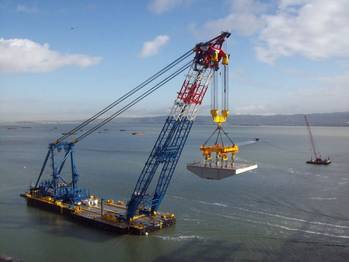
October 2025
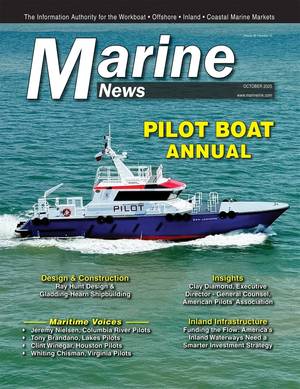 Read the Magazine
Read the Magazine

 Read the Magazine
Read the Magazine
This issue sponsored by:

Replacement vs. Retrofit: What’s Trending in the Dredging Market
Subscribe for
Maritime Reporter E-News
Maritime Reporter E-News is the maritime industry's largest circulation and most authoritative ENews Service, delivered to your Email five times per week



